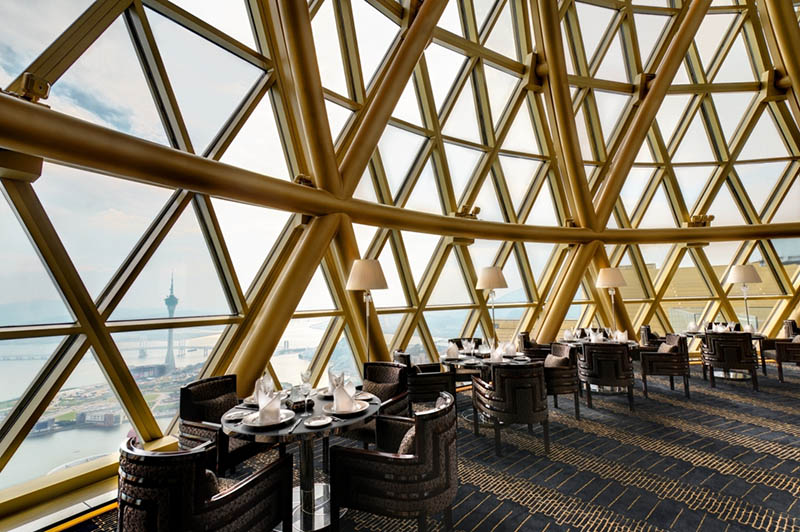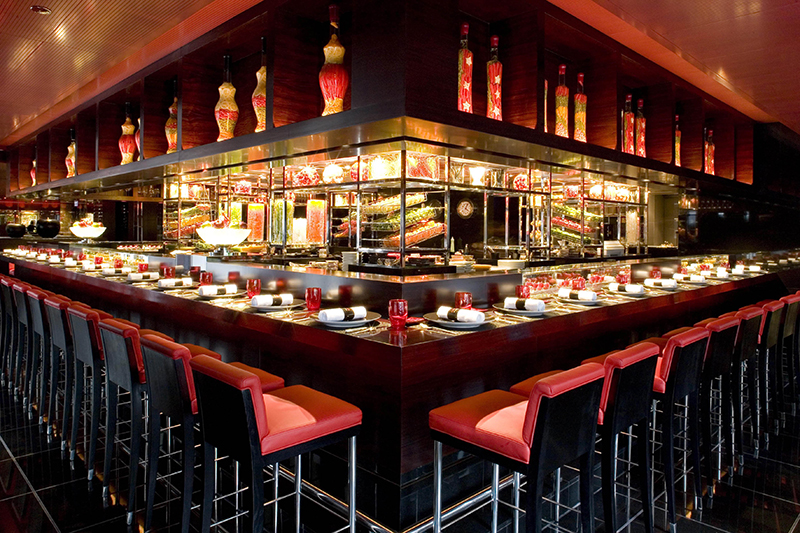

Joël Robuchon. Credit: MGM Resorts International
One of the world’s most influential and decorated chefs, Joël Robuchon, died the morning of August 6 in Geneva, Switzerland, at the age of 73.
Never one to adhere to the stuffy world of classic French cooking, the globally recognized toque was famous for his atelier-style restaurants that gave the diner an up-close-and-personal peek into the formerly veiled world of the kitchen.
Though truffle and caviar were among his favorite foods, the master chef was beloved for his simple approach to French cuisine — most of his dishes only featured three or four ingredients to highlight flavors rather than hide them. Case in point: one his most popular dishes was silky, buttery mashed potatoes.
Robuchon owned and ran a global empire of award-winning eateries, including his eponymous Forbes Travel Guide Five-Star Las Vegas venue in MGM Grand Resort & Casino and Four-Star restaurants in Hong Kong, Singapore and another in Vegas (L’Atelier de Joël Robuchon) that, in a testament to his vision, consistently deliver elegance without pretense.
We’ve had the honor of interviewing the forward-thinking Robuchon a few times over the years. Here are some dollops of wisdom he shared with us during a 2015 chat.
On elaborate plating and presentation techniques
For me, the presentation is extremely important as, first and foremost, it determines whether or not we are going to enjoy a dish. It’s true that a dish that is well-presented will excite the appetite. A dish that isn’t as good [on the eye], we automatically don’t want to eat it.
Once the dish is made, then we’ll select the plate and then we’ll select the manor on which we can valorize that dish. We don’t begin with the plate and say, “I want to use this.” We begin with the dish. We begin with the recipe. Following that, we look for the best presentation and the best plate.
On chefs with whom he enjoyed collaborating
There are a lot of very talented young chefs coming out of the woodwork currently. In this city, I’ve done a large number of collaborations: José Andrés and Alex Stratta [for two]. And it’s always a pleasure to work with these people, because — especially when I don’t know them personally or professionally — it’s interesting to learn their philosophy and the manner in which they work. One’s culinary prowess is certainly a reflection, to a certain extent, of the man or woman themselves.
On hospitality being natural or a learned talent
Americans are well-placed in this domain. When you go into a store, you are well-received, for the most part. There is always a financial incentive. But even if people don’t buy anything, they are still, for the most part, well-received.
In France, it is the exact opposite. It’s almost as if you are annoying the store clerk, because you are trying to buy something. I can critique because I’m French.
There is an automatic instinct to be serviceable and hospitable in this country. In Las Vegas, we don’t necessarily have a very strict or difficult service standards. But there is a technique that needs to be taught and needs to be learned. You do need technique to produce certain things, such as [tableside] carving stations in the restaurant.
On the changing Las Vegas dining scene
I’ve certainly noticed that fine dining has been on a downward trend. In response to that, I see larger and larger restaurants, which really do more numbers, larger cover accounts per day, but it is always a new concept. And it’s constantly a turnover of [new] concepts eliminating old ones. That’s what’s interesting for me in Las Vegas is to see that.

Robuchon au Dome at The Grand Lisboa. Credit: Lisboa Hotels Complex
On growing as a chef and a person
I’ve known both of those periods — growth exterior and growth interior. When I was 50, I was in my restaurant from morning till night. I never went anywhere, and people used to cite me as the example. I was always present in my restaurant.
Then, I [also] knew the secondary experience, which is to travel quite a bit. If it would be possible to [have] both simultaneously, that would be the ideal, because you really can’t imagine the amount you learn by traveling the world. You discover so many new techniques and so many new manners of doing things, new products and ingredients.
I’ve discovered Chinese cuisine, all of the cuisines around the world. And what’s beautiful is that today, in every country in the world, there’s a phenomenal restaurant.
I know that it’s always good to say that a chef has to stay in a restaurant, but then the chef has blinders on. You have to see what’s happening in other locations in order to do it correctly yourself. When I was at José Andrés, again to cite an example, what I got to see was these beautiful ovens and all of these new techniques or new manners of presenting food, and I think that that’s really progress.


